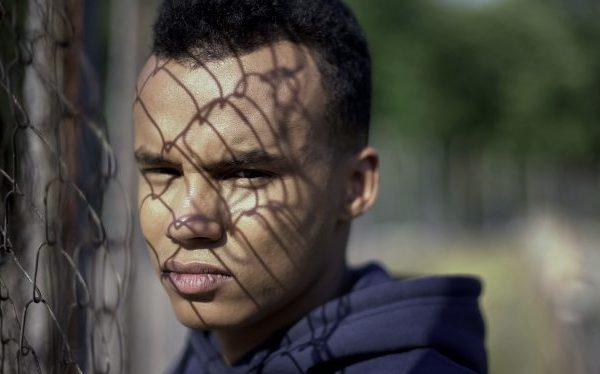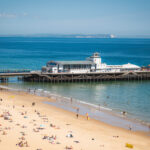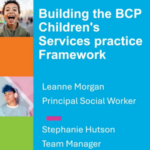
There has been a rise in the number of looked-after children placed in secure homes on welfare grounds over the past year, following several years of decline, according to Department for Education (DfE) figures.
However, the number placed in the settings remains far below the number made subject to High Court deprivation of liberty (DoL) orders, who are often placed in unregistered provision, reflecting the scarcity of provision for children who are at the highest risk.
As of 31 March 2025, 80 children – 72 in England and 8 in Wales – were on secure accommodation orders in the countries’ 14 secure homes, up from 72 the previous year. From 2016, when 105 children were so placed, their number had fallen every year bar one (2021-22) up to this year.
Legal framework for secure care
Under section 25 of the Children Act 1989 and section 119 of the Social Services and Well-being (Wales) Act 2014, the family courts may place a child on a secure accommodation order, if either:
- they have a history of absconding, are likely to abscond from any other type of accommodation and, if they do so, will likely suffer significant harm, or
- they would likely injure themselves or others if placed in a different type of setting.
It has long been understood that the need for secure accommodation has far outstripped supply, with Ofsted saying in 2022 that there were 50 children waiting for a secure home place at any one time.
However, the latest figures show a year-on-year fall, from 237 to 235, in the number of approved secure home places, with just 211 of these available for use, down from 220 in March 2024.
Just under three-quarters of approved places – 170 – were occupied, up from 156 the previous year. Alongside the rise in the number of children placed on welfare grounds, there was a significantly greater increase, from 59 to 83, in the number placed by the government’s Youth Custody Service in relation to offending. A further seven children were placed by councils on criminal justice grounds, down from 25 the previous year.
Rising number of deprivation of liberty orders
The pressures on secure home capacity has been one of the reasons for the rapid rise in recent years in the number of deprivation of liberty (DoL) orders issued by the High Court in relation to children who need to be confined for their own safety but cannot be placed in a secure home.
Often they are placed in unregistered settings though, in such circumstances, the court requires the provider to register as soon as possible.
Ministry of Justice (MoJ) data demonstrates that the courts are receiving many more applications for DoL orders than secure accommodation orders, and making many more of the former than the latter.
In 2024, councils made 261 applications for secure orders, in relation to 224 children, in England and Wales, with 1,280 applications for DoL orders made – for 1,280 children – over the same period, according to the MoJ’s latest quarterly family court statistics.
The High Court made 1,151 DoL orders in total last year, compared with 398 secure orders. (The number of secure orders made in 2024 is greater than the number of applications made during the same time because some relate to 2023 applications and others to applications made for different orders that have resulted in a secure accommodation being made).
Councils less and less likely to apply for secure orders
While the number of secure orders made in 2024 was identical to the number made in 2023, it marks a significant decline from previous year’s totals, with 950 made in 2019 and 623 in 2021, according to the MoJ data.
There has been an accompanying decline in the number of council applications for secure accommodation orders, from 503 in 2019, to 412 in 2021, 350 in 2023 and 261 last year.
In response to the DfE figures, Association of Directors of Children’s Services (ADCS) president Rachael Wardell acknowledged the rise in the number of children placed in secure homes, but added: “It’s important to understand that these changes are taking place in a system with very limited capacity.”
While councils were “committed to doing everything possible to find placements that meet the needs of all children in our care”, Wardell said this could take time for those with the most complex needs.
‘Strategy needed to ensure sufficient placements’
“To truly improve outcomes for these children, we need a long-term national strategy that addresses sufficiency and profiteering and ensures therapeutic and trauma-informed care is available for any child who may need it.”
The previous government allocated capital funding to maintain and expand the network of secure children’s homes, which includes the building of a new setting in London and replacement provision in England.
Under its Children’s Wellbeing and Schools Bill, the DfE plans to create a statutory framework to accommodate children currently placed on DoL orders, which are made under the High Court’s inherent jurisdiction, its power to protect vulnerable people where no statutory provision exists.
The bill would amend section 25 of the Children Act to enable the courts to authorise the placement of children in accommodation provided for the purpose of care and treatment that can be used to deprive them of liberty. The placement type would allow for restrictions to be increased and decreased according to need.







 Bournemouth, Christchurch and Poole
Bournemouth, Christchurch and Poole  Hampshire County Council
Hampshire County Council  Oxfordshire County Council
Oxfordshire County Council  South Gloucestershire Council
South Gloucestershire Council  Wokingham Borough Council
Wokingham Borough Council  Embedding learning in social work teams through a multi-agency approach
Embedding learning in social work teams through a multi-agency approach  The family safeguarding approach: 5 years on
The family safeguarding approach: 5 years on  Harnessing social work values to shape your career pathway
Harnessing social work values to shape your career pathway  Webinar: building a practice framework with the influence of practitioner voice
Webinar: building a practice framework with the influence of practitioner voice  Workforce Insights – showcasing a selection of the sector’s top recruiters
Workforce Insights – showcasing a selection of the sector’s top recruiters  Free CPD on Parkinson’s for health and social care staff
Free CPD on Parkinson’s for health and social care staff 

 Facebook
Facebook X
X LinkedIn
LinkedIn Instagram
Instagram
No comments yet.